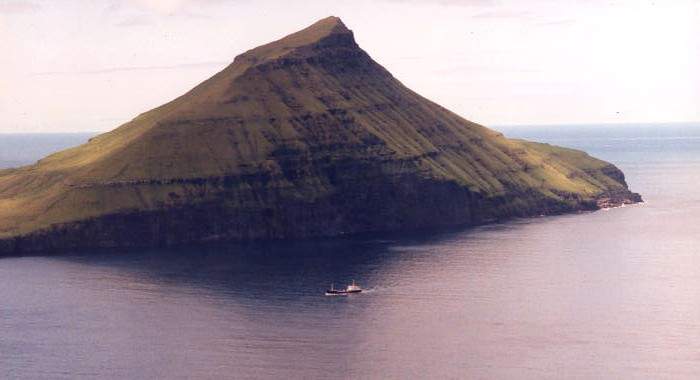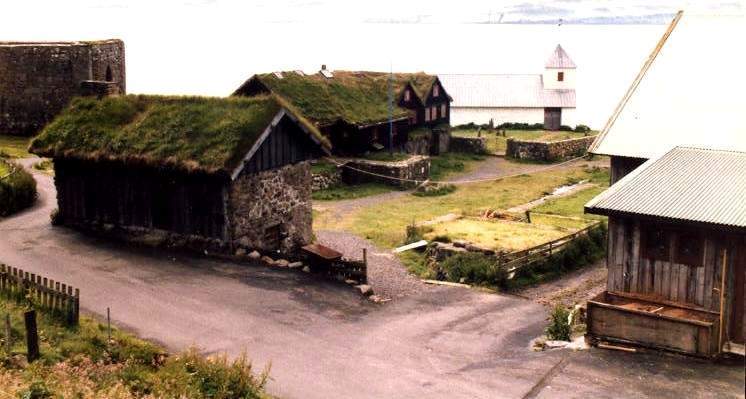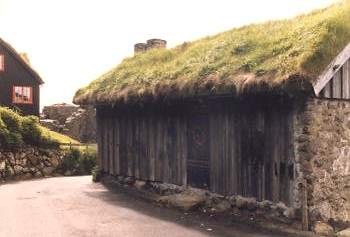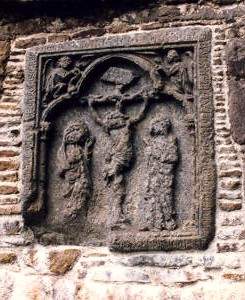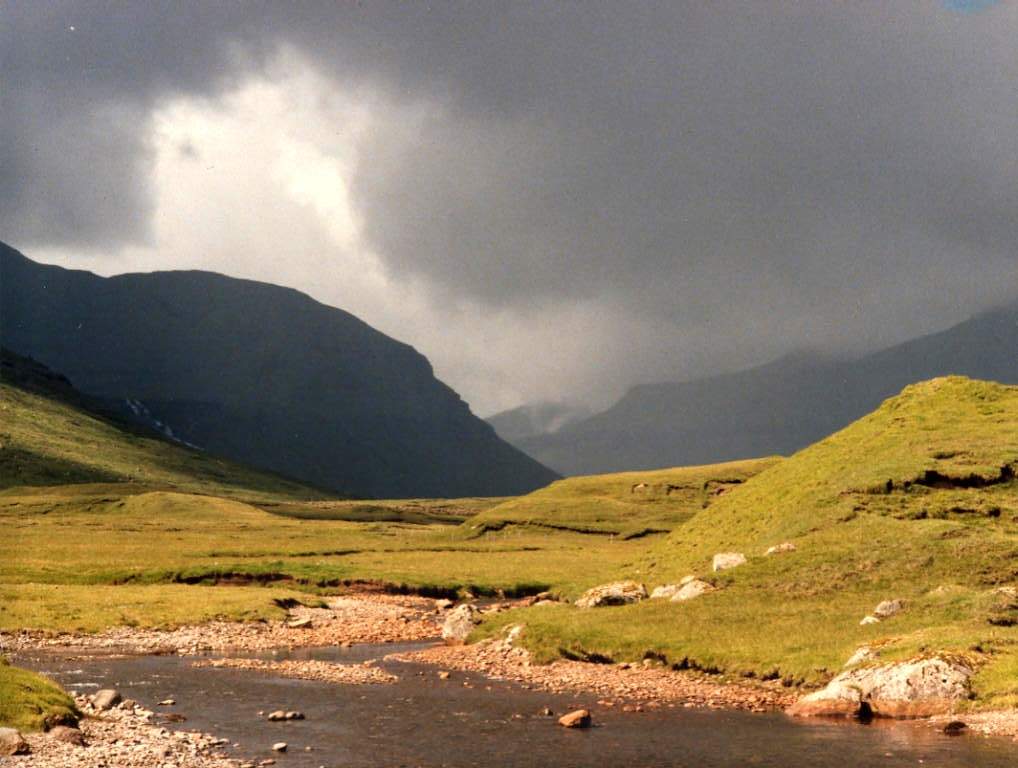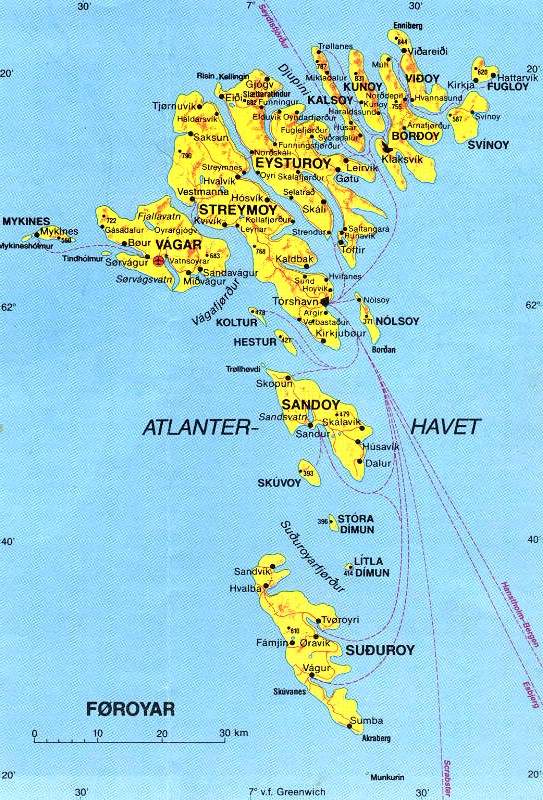
Once more the map of the islands. Tórshavn is situated at 62°N and almost at 7°W. That's about 120 NM northerly than Lerwick at the Shetlands and 240 NM to the south of the polar circle. No need to feel yourself cold because that. The average temperatures are almost the same like those at the Shetlands. It's raining much more, about 1500 mm a year. Thus you'll find many streams and little waterfalls. The islands lay in the 'Gulf stream' and are relatively warm. It's hardly freezing there and if so, it will not last for long time. The weather is very changeable. what you will meet here in one week, you'll see there in one day only.
We always will use the first day after our arrival to take rest and to see where we are. We then look what possibilities there are. There are bus lines to most places - and dependent on the weather; ferries. We decide to rent a car and to explore the islands on our behalf. Main occupation is fishery. the ships are very big and real factories. Then there are many sheep. these animals have the absolute right of the way; if you kill one by car accident, it can become very expensive. Not only the dead animal you'll have to pay for, but also for its eventual descendants!... Nature is very rough and exciting with splendid wide views, if the weather is clear of course. It is very good possible to climb the mountains, but you should bear a stick with you to see if the bottom is reliable or not... Also you should take a compass with you; due to sudden fog the visibility can reduce to zero in no time! Then you'll loose all orientation. If you accidentally slip away it cause your disappearing into the ocean... The northwestern part of the islands is the highest and the Slaettaratindur on Eysturoy is the highest summit with 882 m. Mostly the summit sits in the clouds. The amount of rain depends on the place where you are. The high northwestern part has most rain and the lower eastern part is the driest. The tidal currents are extremely strong and can reach a speed of 12 knots! You have to navigate very careful. But there is not much rising of the tide; in Tórshavn approximately 20 cm, in Klaksvik about 40 at maximum. It is not an area for daredevils...






